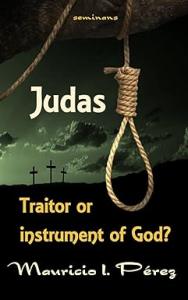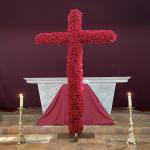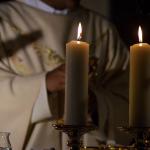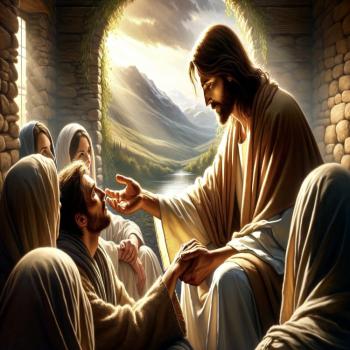
The death of Judas the Iscariot, as Peter recalls it, does not coincide, from a forensic point of view, with the way the traitor ended his life according to Matthew. We tend to assume the infamous apostle took his life by hanging himself from a tree. But, is this truly how he died?
In the Acts of the Apostles, before choosing a new apostle to fill in the empty spot left by the Iscariot in the Apostolic College, Peter recounts the following:
During those days Peter stood up in the midst of the brothers (there was a group of about one hundred and twenty persons in the one place). He said, “My brothers, the scripture had to be fulfilled which the holy Spirit spoke beforehand through the mouth of David, concerning Judas, who was the guide for those who arrested Jesus. He was numbered among us and was allotted a share in this ministry. He bought a parcel of land with the wages of his iniquity, and falling headlong, he burst open in the middle, and all his insides spilled out. This became known to everyone who lived in Jerusalem, so that the parcel of land was called in their language ‘Akeldama,’ that is, Field of Blood (Acts 1:15-23).
This differs from what Matthew writes in his gospel:
Then Judas, his betrayer, seeing that Jesus had been condemned, deeply regretted what he had done. He returned the thirty pieces of silver to the chief priests and elders, saying, “I have sinned in betraying innocent blood.” They said, “What is that to us? Look to it yourself.” Flinging the money into the temple, he departed and went off and hanged himself. The chief priests gathered up the money, but said, “It is not lawful to deposit this in the temple treasury, for it is the price of blood.” After consultation, they used it to buy the potter’s field as a burial place for foreigners. That is why that field even today is called the Field of Blood (Mt 27:1-9).
Two versions that don’t match
Matthew tells us that the Iscariot hanged himself. Peter, in the Acts of the Apostles, explains that he fell upside down, burst open in the middle and his insides spilled.
If Judas hanged himself, as Matthew says, how could he have fallen upside down? Unless he had hung himself from his feet and the ropes accidentally slid, plummeting toward the ground below. But that doesn’t make sense. No one hangs himself from his feet to take his own life.
Falling upside down and the tremendous impact on the ground ending up with the insides spilled, suggests rather that Judas jumped off a cliff. According to what Peter says then, this is how the Iscariot took his life.
There are those who intend to reconcile the two stories by making Judas hang himself from a tree branch above a precipice and then a lightning bolt breaking the branch, making him fall and gutting out when hitting the ground. But hanging himself by tying the rope to a branch over a precipice would require such an acrobatic effort — it doesn’t make sense when a man is in such tremendous despair. This elaborate and very macabre ending can rather be understood as the fruit of the great common contempt that people feel for Judas, wishing that lightning bolt stroke him! When I grew up in Mexico, for instance, there was an old Holy Week popular tradition consisting on making papier-mâché dolls with the faces of famous people — preferably politicians — filled with firecrackers to make them explode on Holy Saturday. These dolls were known as “Judas”.
Why did Judas take his life?
It is clear that the versions of Matthew in his gospel and Peter in the Acts of the Apostles do not match. According to Matthew, Judas hanged himself. According to what Peter describes, he should rather have thrown himself down to the precipice.
In any case, a tragic fate as a result of his great remorse. Unlike repentance, which moves us to the will to repair the damage caused to those affected and towards the path to reconciliation, remorse remains inside the aggressor. Remorse leads to despair and this, to hopelessness. Hopelessness consists of losing hope in salvation, losing confidence in God’s merciful forgiveness — this is the sin against the Holy Spirit that Jesus warned his apostles it would be the only one they could not forgive (Mt 12:31).
Remorse, despair and hopelessness ended up leading Judas to take his own life. But did he do it by hanging himself or throwing himself off a cliff?
Is Matthew’s version connected to the Old Testament?
The Second Book of Samuel tells us the story of Ahitophel, a close friend of King David. He was one of his closest collaborators and the monarch entrusted him with all the secrets of his kingdom. But one day, Absalom and David’s enemies conspired to kill the king and Ahitophel betrayed his friend by taking sides with his adversary. He planned to launch himself in pursuit of David accompanied by a large army. He did it during the night, in order to find his friend fatigued and without strength. But Ahitophel didn’t succeed. When he saw his plans frustrated, he went home riding on his donkey and hanged himself.
As we may see, there is a very interesting connection between Judas and Ahitophel, the close friend and traitor of King David. Ahitophel was also a close collaborator of King David; Ahitophel also entrusted David with all the secrets of his kingdom; Ahitophel also betrayed his close friend; and Ahitophel hanged himself.
Matthew composes his gospel in order to evangelize and catechize the Christian converts of Judaism. It is important for him to show them that Jesus was truly the Messiah expected by the people of Israel and announced by the prophets.
One of the resources used by this evangelist is to show Jesus as the ultimate heir of King David. Matthew even begins his gospel with the words, “The book of the genealogy of Jesus Christ, the son of David, the son of Abraham” (Mt 1:1). And from there the genealogy of Jesus is listed out, with the purpose of revealing his royal lineage.
Behind Matthew’s intention to represent Jesus as the new David, it is plausible to think that the outcome he describes of Judas is one more literary resource to emphasize the resemblance between the two kings. Thus, Matthew recounted the death of Judas based on the story of Ahitophel. By reconstructing the suicide of the treacherous apostle in this way, the evangelist intends to emphasize that Jesus lived the same as David, because he himself was the Messiah and consequently: the one in whom all must believe.
Conclusion
Based on this analysis, Judas had to take his own life rather, as Peter describes, jumping off a cliff, falling upside down and with his insides coming out of his abdomen.
The fact that Peter emphasizes that all Jerusalem knew about this, reaffirms the credibility of his testimony. The suicide described by Matthew in his gospel is a literary resource to aid him in his purpose to connect Jesus, to King David, his royal ancestor, as one more proof that Jesus is indeed the Messiah the Jews were expecting for ages.
As you may see, there are things we may take for granted concerning Judas the Iscariot that, in reality, might be different. Judas can be puzzling, for sure. Why did Jesus choose him to be one of his twelve apostles? What moved him to betray his Master? Why was he paid exactly thirty pieces of silver? And more importantly, was Judas a traitor on his own accord or was he predestined by God so that his betrayal could trigger the arrest, Passion and death of Jesus on a cross, so that He could be our Savior? Only a thorough biblical analysis of this sinister apostle can lead us to the answers.
It is this analysis what I develop in my book Judas: Traitor or instrument of God? Available in paperback, Kindle and audiobook.















